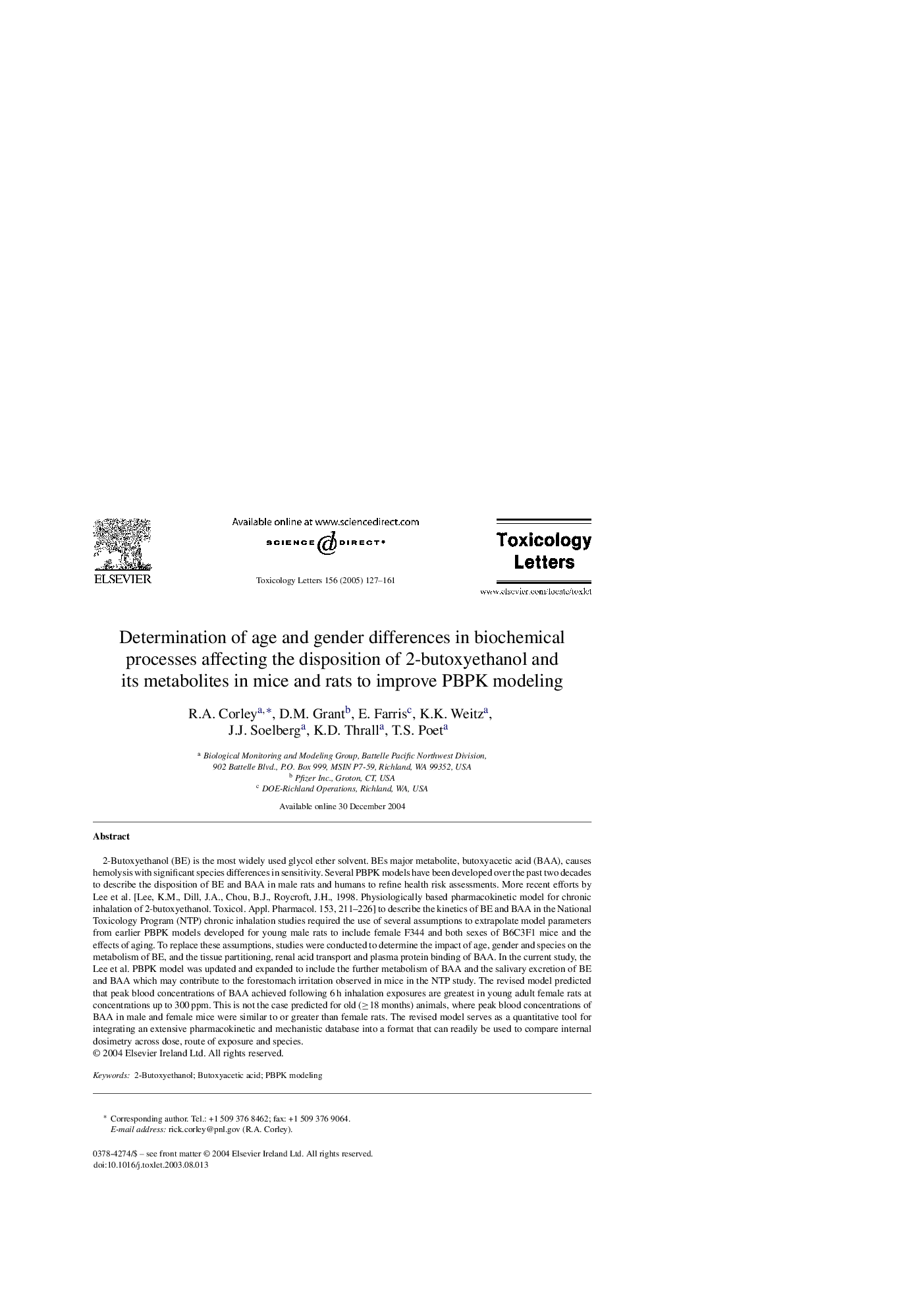| کد مقاله | کد نشریه | سال انتشار | مقاله انگلیسی | نسخه تمام متن |
|---|---|---|---|---|
| 9036840 | 1133377 | 2005 | 35 صفحه PDF | دانلود رایگان |
عنوان انگلیسی مقاله ISI
Determination of age and gender differences in biochemical processes affecting the disposition of 2-butoxyethanol and its metabolites in mice and rats to improve PBPK modeling
دانلود مقاله + سفارش ترجمه
دانلود مقاله ISI انگلیسی
رایگان برای ایرانیان
موضوعات مرتبط
علوم زیستی و بیوفناوری
علوم محیط زیست
بهداشت، سم شناسی و جهش زایی
پیش نمایش صفحه اول مقاله

چکیده انگلیسی
2-Butoxyethanol (BE) is the most widely used glycol ether solvent. BEs major metabolite, butoxyacetic acid (BAA), causes hemolysis with significant species differences in sensitivity. Several PBPK models have been developed over the past two decades to describe the disposition of BE and BAA in male rats and humans to refine health risk assessments. More recent efforts by Lee et al. [Lee, K.M., Dill, J.A., Chou, B.J., Roycroft, J.H., 1998. Physiologically based pharmacokinetic model for chronic inhalation of 2-butoxyethanol. Toxicol. Appl. Pharmacol. 153, 211-226] to describe the kinetics of BE and BAA in the National Toxicology Program (NTP) chronic inhalation studies required the use of several assumptions to extrapolate model parameters from earlier PBPK models developed for young male rats to include female F344 and both sexes of B6C3F1 mice and the effects of aging. To replace these assumptions, studies were conducted to determine the impact of age, gender and species on the metabolism of BE, and the tissue partitioning, renal acid transport and plasma protein binding of BAA. In the current study, the Lee et al. PBPK model was updated and expanded to include the further metabolism of BAA and the salivary excretion of BE and BAA which may contribute to the forestomach irritation observed in mice in the NTP study. The revised model predicted that peak blood concentrations of BAA achieved following 6 h inhalation exposures are greatest in young adult female rats at concentrations up to 300 ppm. This is not the case predicted for old (â¥18 months) animals, where peak blood concentrations of BAA in male and female mice were similar to or greater than female rats. The revised model serves as a quantitative tool for integrating an extensive pharmacokinetic and mechanistic database into a format that can readily be used to compare internal dosimetry across dose, route of exposure and species.
ناشر
Database: Elsevier - ScienceDirect (ساینس دایرکت)
Journal: Toxicology Letters - Volume 156, Issue 1, 28 March 2005, Pages 127-161
Journal: Toxicology Letters - Volume 156, Issue 1, 28 March 2005, Pages 127-161
نویسندگان
R.A. Corley, D.M. Grant, E. Farris, K.K. Weitz, J.J. Soelberg, K.D. Thrall, T.S. Poet,